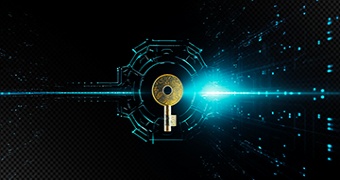We are living in a world where artificial intelligence (AI) is transforming eve....
Integrating ISO/IEC 27001 and ISO 31000 for Effective Information Security and Risk Management

In today's dynamic digital world, information security has become a top priority for organizations of all sizes. With the staggering cost of data breaches exceeding U.S. $4.45 million on average and cybercrime costs projected to cost the global economy more than U.S. $13.82 trillion by 2028, protecting sensitive information and mitigating risks is no longer optional, it is crucial for sustained business success.
However, many organizations still struggle with siloed approaches to information security and risk management, often leading to ineffective controls and missed opportunities. This is where the powerful synergy between ISO/IEC 27001 and ISO 31000 comes into play. Integrating these standards can create a coordinated approach that fortifies an organization's ability to safeguard its information assets and manage risks proactively.
ISO/IEC 27001: The Foundation of Information Security
Serving as the gold standard for information security management systems (ISMS), ISO/IEC 27001 provides a comprehensive framework for identifying, assessing, and mitigating information security risks. It outlines best practices for implementing controls across various areas like access control, data encryption, and incident response. By understanding the key principles and requirements of ISO/IEC 27001, organizations can establish a robust information security management system (ISMS) that protects against potential threats.
ISO 31000: A Holistic Approach to Risk Management
While ISO/IEC 27001 excels at information security controls, ISO 31000 offers a broader framework for managing risks of all kinds, including operational, financial, and reputational. Its systematic approach to risk identification, assessment, and treatment provides a holistic view of organizational vulnerabilities, helping to prioritize risks and allocate resources effectively.
The Benefits of Integration
The true potential lies in integrating these two standards. When organizations combine the risk assessment framework of ISO 31000 with the control implementation guidance of ISO/IEC 27001, they unlock a powerful synergy that delivers significant benefits:
- Holistic Risk Assessment: By incorporating the principles of ISO 31000 into their ISMS, organizations gain a more comprehensive understanding of their information security risks, placing them within the broader context of their overall risk landscape. This allows for better prioritization and allocation of resources to address the most critical threats.
- Targeted Control Implementation: With a clearer understanding of the identified risks, organizations can focus on implementing the most relevant ISO/IEC 27001 controls, leading to a more efficient and effective risk mitigation strategy. This avoids the "checklist" mentality of simply implementing all controls, regardless of their impact on specific risks.
- Enhanced Decision-Making: By integrating risk management and information security, organizations gain valuable insights into the potential impact of security threats on their overall business objectives. This data-driven approach empowers informed decision-making around risk mitigation and resource allocation, leading to greater organizational resilience.
The integrated approach yields other benefits as well, including an improved information security posture, enhanced risk management capabilities, and the ability to demonstrate compliance to stakeholders. These advantages contribute to building trust and credibility in an organization's operations.
Expert Insights: Why Integration is Essential
Industry experts are clear about the critical role of integration. Nick Riemsdijk, an expert in Information Security and Risk Management, states, "By using ISO 31000 in an ISMS, organizations can establish a systematic and structured approach to managing risks to their information assets." Rinske Geerlings, the Managing Director and Founder of Business As Usual, emphasizes, "The negative we see today is that people are still focusing a lot on the causes, and treating the causes rather than consequences. For example, in Information Security we see a lot of focus on penetration testing and focusing on the cause of the risk rather than saying what is our plan."
For more insights from the experts, you can listen to the recorded webinar:
Building an Integrated System: Practical Steps
Implementing an integrated system requires careful planning and execution. Here are some key steps:

- Align Processes: Map your existing risk management processes to the ISO 31000 framework and integrate information security considerations.
- Foster Collaboration: Break down silos and create a culture of collaboration between information security and risk management teams.
- Monitor and Improve: Regularly assess the effectiveness of your integrated system and adapt your approach based on feedback and changing risks.
To ensure the continued success of the integrated approach, you should focus on continuous monitoring, training, and periodic audits. These best practices help maintain the effectiveness of the integrated system and adapt to evolving threats and risks.
The Future is Integrated
The siloed approach to information security and risk management is a relic of the past. In today's interconnected world, organization s must embrace integrated solutions like the powerful synergy between ISO/IEC 27001 and ISO 31000. By doing so, they can gain a holistic understanding of their risks, implement effective controls, and make informed decisions that protect their critical assets and ensure long-term success.
About the author
Ali Kadrija is the SEO Specialist at PECB. If you have any questions, please do not hesitate to contact him at: support@pecb.com.


